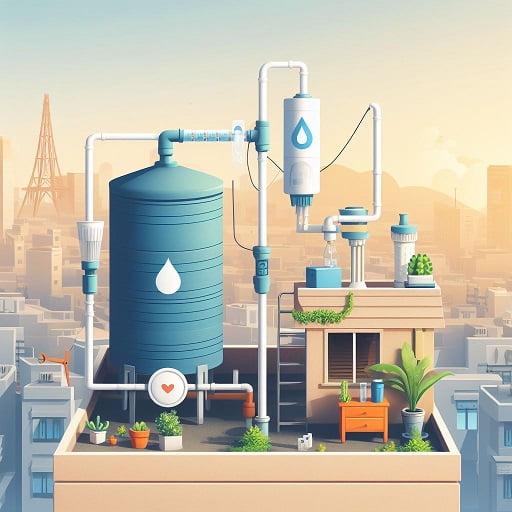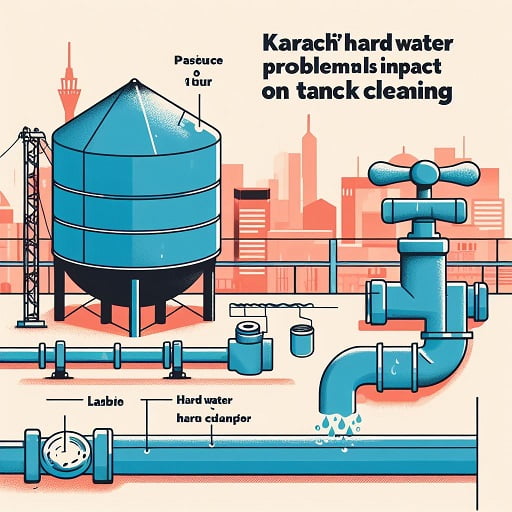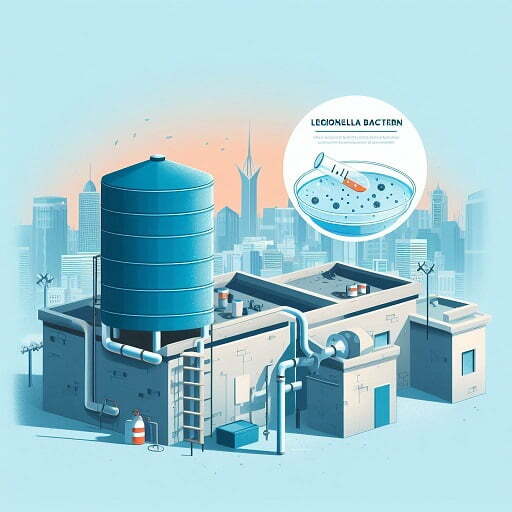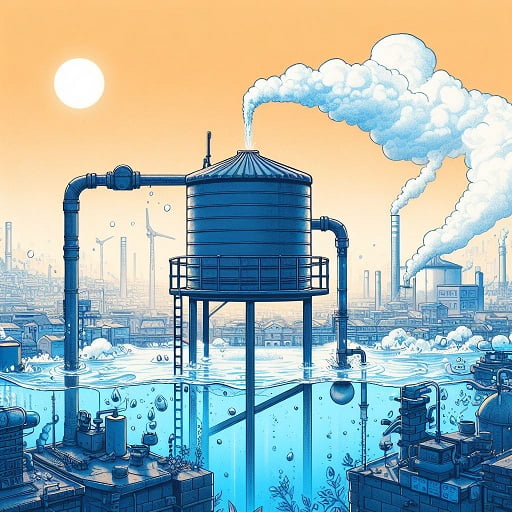Water is essential for life, but not all water is safe to drink. In Karachi, the largest city in Pakistan, water quality is a major concern for millions of residents. According to a report by the Pakistan Council of Research in Water Resources (PCRWR), 91% of the water samples collected from Karachi were unfit for human consumption. This poses serious health risks for the people who depend on this water for their daily needs.
In this article, we will explore the importance of clean water, the water contaminants in Karachi, the types of water filtration systems available, the DIY water filtration methods, the maintenance and cleaning of water filtration systems, the water quality testing methods, the government initiatives and regulations, and the benefits of clean water. We hope that this article will help you make informed decisions about ensuring water quality in your home.
Understanding the Importance of Clean Water
Clean water is vital for health and well-being. Water is involved in many bodily functions, such as digestion, circulation, temperature regulation, waste elimination, and immunity. Without clean water, we are exposed to various diseases and infections caused by bacteria, viruses, parasites, chemicals, and metals that can contaminate water sources.
Water quality challenges in Karachi are mainly due to inadequate water supply, poor sanitation, industrial pollution, and seawater intrusion. These factors affect both the quantity and quality of water available for domestic use. As a result, many people in Karachi face water shortages, high water bills, and health problems.
The role of home filtration and cleaning is crucial in ensuring water quality in Karachi homes. By using appropriate water filtration systems and methods, we can remove or reduce the harmful contaminants from our water and make it safer to drink and use. Moreover, by maintaining and cleaning our water filtration systems regularly, we can ensure their optimal performance and longevity.
Water Contaminants in Karachi
Water contaminants are substances that can adversely affect the quality of water and pose health risks to humans and animals. Some of the common water contaminants in Karachi are:
- Microorganisms: These include bacteria (such as E. coli and Salmonella), viruses (such as hepatitis A and polio), and parasites (such as Giardia and Cryptosporidium) that can cause diarrhea, dysentery, typhoid, cholera, hepatitis, and other infections.
- Heavy metals: These include lead, arsenic, mercury, cadmium, chromium, and copper which can leach into water from pipes, fittings, industrial waste, mining activities, and natural sources. They can cause neurological disorders, kidney damage, cancer, anemia, and other chronic diseases.
- Chemicals: These include pesticides (such as DDT and endosulfan), herbicides (such as atrazine and glyphosate), fertilizers (such as nitrate and phosphate), detergents (such as surfactants and phosphates), industrial solvents (such as benzene and trichloroethylene), and pharmaceuticals (such as antibiotics and hormones) that can enter water from agricultural runoff, sewage discharge, industrial effluents, and household waste. They can disrupt the endocrine system, and cause reproductive problems, cancer, and other illnesses.
- Salts: These include sodium chloride (common salt), magnesium chloride, calcium carbonate, and other salts that can increase the salinity of water due to seawater intrusion, evaporation, and natural dissolution. They can affect the taste, odor, and color of water, as well as cause corrosion, scaling, and clogging of pipes and appliances.
Types of Water Filtration Systems
Water filtration systems are devices or methods that remove or reduce the contaminants from water by physical, chemical, or biological processes. There are many types of water filtration systems available in the market, each with its own advantages and disadvantages. Some of the common types are:
Activated Carbon Filters
Activated carbon filters are made of porous materials such as charcoal, coconut shells, or wood that have been treated to increase their surface area and adsorption capacity. They work by trapping and removing organic compounds, chlorine, odours, and tastes from water. They are easy to use and maintain, and relatively inexpensive.
However, activated carbon filters cannot remove microorganisms, heavy metals, nitrates, or fluorides from water. They also need to be replaced regularly to prevent bacterial growth and clogging.
Reverse Osmosis Systems
Reverse osmosis systems use a semipermeable membrane that allows only pure water molecules to pass through under high pressure. They work by forcing water through the membrane and rejecting the contaminants on the other side. They are very effective in removing microorganisms, heavy metals, chemicals, and salts from water. They also improve the taste and appearance of water.
However, reverse osmosis systems are expensive to install and operate, and require a lot of water and electricity. They also produce a lot of wastewater and may remove some beneficial minerals from water.
UV Purifiers
UV purifiers use ultraviolet light to kill or inactivate microorganisms in water. They work by exposing water to a UV lamp that emits radiation at a wavelength of 254 nanometers. They are very efficient in eliminating bacteria, viruses, and parasites from water. They also do not alter the taste, odour, or colour of water.
However, UV purifiers cannot remove heavy metals, chemicals, or salts from water. They also need a clear and sediment-free water source to work properly. They also require electricity and regular maintenance of the UV lamp.
Ion Exchange Resin Filters
Ion exchange resin filters use resin beads that exchange ions with the dissolved contaminants in water. They work by passing water through a column of resin that either removes hardness ions (such as calcium and magnesium) or removes specific contaminants (such as arsenic and nitrate). They are effective in softening water and removing targeted contaminants from water. They also improve the taste and quality of water.
However, ion exchange resin filters cannot remove microorganisms, chlorine, or organic compounds from water. They also need to be regenerated periodically with salt or chemicals to restore their ion exchange capacity. They also may increase the sodium content of water.
Ceramic Filters
Ceramic filters are made of porous clay materials that filter out suspended solids and microorganisms from water. They work by gravity or pressure-driven flow of water through the ceramic element that traps and removes the impurities. They are simple to use and maintain, and low-cost.
However, ceramic filters cannot remove heavy metals, chemicals, or salts from water. They also need to be cleaned regularly to prevent clogging and bacterial growth. They also may break or crack easily.
DIY Water Filtration Methods
If you do not have access to a commercial water filtration system, you can still try some DIY water filtration methods that can help you improve the quality of your water. These methods are not as effective or reliable as the professional systems, but they can provide some basic filtration and disinfection. Some of the DIY water filtration methods are:
- Boiling: Boiling is one of the simplest and oldest methods of water purification. It works by heating water to a rolling boil for at least one minute, which kills most of the microorganisms in water. Boiling also removes some volatile organic compounds and gases from water. However, boiling does not remove heavy metals, chemicals, or salts from water. It also consumes a lot of fuel and time, and may alter the taste and appearance of water.
- Solar disinfection: Solar disinfection (SODIS) is a method that uses sunlight to disinfect water. It works by filling clear plastic bottles with water and exposing them to direct sunlight for at least six hours, which deactivates most of the microorganisms in water by UV radiation and heat. SODIS also removes some organic compounds and gases from water. However, SODIS does not remove heavy metals, chemicals, or salts from water. It also depends on weather conditions and bottle quality, and may not be effective against some resistant microorganisms.
- Sand filter: Sand filter is a method that uses sand to filter out suspended solids and microorganisms from water. It works by pouring water through a container filled with layers of sand, gravel, and charcoal, which trap and remove the impurities. Sand filter also improves the taste and odour of water. However, sand filter does not remove heavy metals, chemicals, or salts from water. It also needs to be cleaned and replaced regularly to prevent clogging and bacterial growth.
- Bleach: Bleach is a method that uses chlorine to disinfect water. It works by adding a few drops of bleach (such as sodium hypochlorite) to a litre of water and letting it stand for 30 minutes, which kills most of the microorganisms in water. Bleach also oxidizes some organic compounds and metals in water. However, bleach does not remove heavy metals, chemicals, or salts from water. It also may leave a residual chlorine taste and smell in water, and may be harmful if used in excess or incorrectly.
Maintenance and Cleaning of Water Filtration Systems
Maintenance and cleaning of water filtration systems are important to ensure their efficiency and durability. By following some simple steps, you can keep your water filtration systems in good condition and avoid potential problems. Here is a step-by-step cleaning guide for each system:
Activated Carbon Filters
- Replace the filter cartridge every 3 to 6 months, or as recommended by the manufacturer.
- Before replacing the cartridge, turn off the water supply and release the pressure from the system.
- Remove the old cartridge and dispose of it properly.
- Clean the filter housing with a mild detergent and water, and rinse well.
- Insert the new cartridge and secure it in place.
- Turn on the water supply and flush the system for a few minutes to remove any air or carbon dust.
Reverse Osmosis Systems
- Replace the pre-filter, post-filter, and membrane every 6 to 12 months, or as recommended by the manufacturer.
- Before replacing the filters and membrane, turn off the water supply and release the pressure from the system.
- Remove the old filters and membrane and dispose of them properly.
- Clean the filter housings and membrane housing with a mild detergent and water, and rinse well.
- Insert the new filters and membrane and secure them in place.
- Turn on the water supply and flush the system for a few hours to remove any air or contaminants.
UV Purifiers
- Replace the UV lamp every 12 months, or as recommended by the manufacturer.
- Before replacing the lamp, turn off the power supply and disconnect the electrical cord from the unit.
- Remove the old lamp and dispose of it properly.
- Clean the quartz sleeve with a soft cloth and alcohol, and wipe dry.
- Insert the new lamp and connect it to the electrical cord.
- Turn on the power supply and check if the lamp is working properly.
Ion Exchange Resin Filters
- Regenerate the resin every 1 to 3 months, or as recommended by the manufacturer.
- Before regenerating the resin, turn off the water supply and release the pressure from the system.
- Add salt or chemicals to the brine tank or regeneration tank, according to the instructions of the manufacturer.
- Initiate the regeneration cycle by manually or automatically activating the control valve.
- Wait for the regeneration cycle to complete, which may take several hours depending on the system.
- Turn on the water supply and flush the system for a few minutes to remove any excess salt or chemicals.
Ceramic Filters
- Clean the ceramic element every 1 to 3 months, or as recommended by the manufacturer.
- Before cleaning the element, turn off the water supply and release the pressure from the system.
- Remove the ceramic element and rinse it with clean water.
- Scrub the ceramic element with a soft brush or sponge to remove any dirt or deposits.
- Sanitize the ceramic element by boiling it in water for 10 minutes, or soaking it in a bleach solution for 30 minutes, and rinsing it well.
- Reinstall the ceramic element and secure it in place.
- Turn on the water supply and flush the system for a few minutes to remove any air or impurities.
Water Quality Testing
Water quality testing is the process of measuring the physical, chemical, and biological characteristics of water to determine its suitability for a specific purpose. Water quality testing is important to ensure that the water we use and consume is safe and meets the standards and regulations set by the authorities.
There are different methods for testing water quality at home, depending on the type of contaminants we want to detect and the level of accuracy we need. Some of the methods are:
- Test strips: Test strips are paper or plastic strips that change colour when dipped in water, indicating the presence or concentration of a certain contaminant. They are easy to use and inexpensive, but they have limited accuracy and shelf life. They can test for parameters such as pH, hardness, chlorine, nitrate, iron, and lead.
- Test kits: Test kits are devices or tools that use chemical reactions or indicators to measure the level of a specific contaminant in water. They are more accurate and reliable than test strips, but they require more time and skill to use. They can test for parameters such as bacteria, arsenic, fluoride, pesticides, and metals.
- Digital meters: Digital meters are electronic devices that use sensors or probes to display the reading of a certain parameter in water. They are very accurate and precise, but they are expensive and need regular calibration and maintenance. They can test for parameters such as pH, conductivity, dissolved oxygen, turbidity, and temperature.
- Laboratory analysis: Laboratory analysis is the most accurate and comprehensive method of water quality testing. It involves sending a water sample to a certified laboratory that uses advanced instruments and methods to analyze the water for various contaminants and parameters. It is expensive and time-consuming, but it provides a detailed report and recommendations.
Government Initiatives and Regulations
The government of Pakistan has taken several initiatives and regulations to improve the water quality in Karachi and other parts of the country. Some of these are:
- National Drinking Water Policy: The National Drinking Water Policy was launched in 2009 to provide a framework for ensuring safe drinking water for all citizens. It aims to improve the governance, management, financing, monitoring, and regulation of the drinking water sector. It also sets the national drinking water quality standards based on the World Health Organization (WHO) guidelines.
- Clean Drinking Water for All Programme: The Clean Drinking Water for All Programme was initiated in 2004 to provide clean drinking water to rural and urban areas through the installation of filtration plants, reverse osmosis plants, solar disinfection units, and water quality testing kits. The programme has installed over 6,000 plants across the country, benefiting over 40 million people.
- Karachi Water Partnership: The Karachi Water Partnership is a public-private partnership that was established in 2007 to address the water challenges in Karachi. It involves various stakeholders such as government agencies, civil society organizations, academic institutions, media outlets, and private sector entities. It aims to promote water conservation, awareness, advocacy, and action through various projects and campaigns.
Benefits of Clean Water
Clean water is not only a necessity but also a blessing. By ensuring water quality in our homes, we can enjoy many benefits for our health and environment. Some of the benefits are:
- Improved health: Clean water reduces the risk of waterborne diseases and infections, and supports the proper functioning of our organs and systems. It also helps us stay hydrated, energized, and refreshed.
- Enhanced beauty: Clean water improves the appearance and condition of our skin, hair, and nails. It also helps us maintain a healthy weight and a radiant complexion.
- Reduced costs: Clean water saves us money on medical bills, water bills, and maintenance expenses. It also extends the life span and efficiency of our appliances and plumbing fixtures.
- Increased satisfaction: Clean water improves the taste and quality of our food and beverages. It also gives us a sense of comfort, security, and happiness.
To illustrate the benefits of clean water, here are some personal experiences and testimonials from people who have used water filtration systems in their homes:
- Aliya, a housewife from Gulshan-e-Iqbal, says: “I have been using a reverse osmosis system for two years now, and I am very happy with it. My family loves the taste of the water, and we have noticed a difference in our health and skin. We also save money on bottled water and doctor visits.”
- Bilal, a businessman from Clifton, says: “I have installed a UV purifier in my office, and I am very impressed with its performance. It kills all the germs in the water, and makes it clear and odourless. My employees appreciate the clean water, and they are more productive and motivated.”
- Sana, a student from Nazimabad, says: “I have made a DIY sand filter at home, and I am very proud of it. It filters out the dirt and sediment from the water, and makes it safer to drink. It is also very cheap and easy to make.”
Conclusion
In conclusion, water quality is a vital issue that affects the lives of millions of people in Karachi. By understanding the importance of clean water, the water contaminants in Karachi, the types of water filtration systems available, the DIY water filtration methods, the maintenance and cleaning of water filtration systems, the water quality testing methods, the government initiatives and regulations, and the benefits of clean water, we can take action to ensure water quality in our homes.
We hope that this article has provided you with useful information and guidance on how to ensure water quality in your home. We encourage you to try some of the water filtration systems and methods we have discussed and to test your water quality regularly. We also urge you to support the government efforts and regulations to improve the water quality in Karachi.
Remember, clean water is not a luxury, but a right. By ensuring water quality in our homes, we can protect our health, environment, and future.
Additional Resources and References
If you want to learn more about water quality and filtration, here are some sources, websites, and tools that you can check out:
- [Pakistan Council of Research in Water Resources]: The official website of PCRWR, provides information on water quality standards, monitoring, research, and projects in Pakistan.
- [WaterAid Pakistan]: The official website of WaterAid Pakistan, which is a non-governmental organization that works to improve access to safe water, sanitation, and hygiene in Pakistan.
- [Water Filter Guide]: A website that offers comprehensive reviews and comparisons of various types of water filters and systems.
- [Water Quality Test Kit]: A product that allows you to test your water quality at home for various parameters such as bacteria, lead, nitrate, pH, and hardness.
- [Karachi Water Partnership]: The official website of KWP, which provides information on its vision, mission, objectives, activities, and partners.
https://www.pcrwr.gov.pk/ : https://www.wateraid.org/pk/ : https://waterfilterguide.org/ : http://www.karachiwaterpartnership.org/




